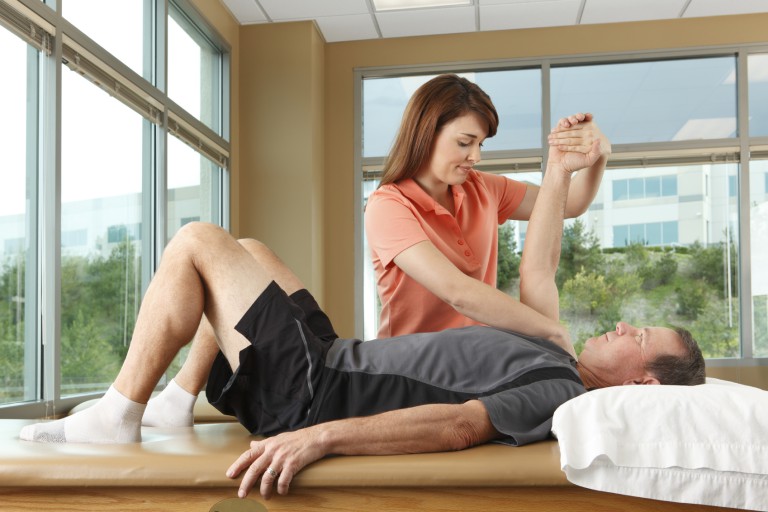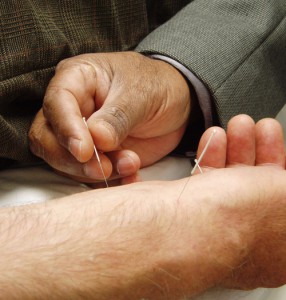Premier Orthopaedics surgeon, Dr. Jonathan Garino, performed back-to-back procedures on a couple who have been married for 54 years! They shared their same-day surgery journey at the MUVE Center with @6ABC. Watch the incredible story below. Read the full ABC6 story...
LATEST BLOGS
What are Non-Surgical Treatment Options for a Herniated Disc
The spine consists of 26 bones called vertebrae and between them are cushion-like pads called “intervertebral discs”. The discs serve as shock absorbers for the vertebrae and help provide stability to the spine. When one of these intervertebral discs loses its normal...
Everything You Need to Know About Plantar Fasciitis
Plantar fasciitis is the most common diagnosis for those experiencing heel pain, with almost 2 million people seeking treatment for this condition each year according to the American Academy of Orthopaedic Surgeons. It involves inflammation of a thick band of tissue...
Non-Surgical Sports Medicine Treatments

Orthopaedic doctors try to avoid surgery if they believe an injury can be healed with other methods. There are many techniques available for effectively treating sprains, fractures, tears, and other sports injuries. In general, these treatments are less invasive than surgery and usually involve a shorter recovery time.
If you have a sports injury, discuss your options with an orthopaedic physician. In some cases when the injury is severe, surgery may be required. Less severe injuries can typically be healed using one of the following methods:
Physical Therapy
Physical therapy is a series of repetitive exercises and stretches that treat the injury by strengthening the muscle over time.
A physical therapist will evaluate your injury and determine the best course of action for treating it. He or she will design a program specifically for you and your injury that will involve exercises, stretches, or massage. Some exercises can involve various machines at the facility such as resistance bikes, treadmills, and whirlpools.
The length of your physical therapy treatment will depend on your injury. Typically, patients will go to their physical therapy facility for 45 minutes to one hour once or twice a week. This could continue for several weeks to several months, or until your physical therapist believes that your injury has healed.
Your physical therapist will also give you exercises to continue at home when you’re not at one of the sessions, or after you’ve completed the course of treatment.
Bracing and Casting
When you’ve experienced an injury such as a sprain, strain, fracture, or mild tear, your doctor may use a brace or cast to immobilize the injury and hold it in place. This will allow the bone, muscle, ligament, or tendon to heal on its own.
A cast is best suited for fractures and is applied to keep the broken ends of a bone in the appropriate position during the healing process. A brace is the better option for sprains because it allows limited movement of joints so they’re not completely stiff.
Acupuncture
This ancient Chinese procedure involves inserting thin needles into the skin to promote blood flow and increase energy. Although it originated as a component of Chinese medicine, it has become popular in the United States among athletes to help them feel better overall.
While the effects of acupuncture have not been scientifically proven, it’s believed that putting needles into certain points in the skin releases tension and sends energy throughout the body. This helps relieve pain, nausea, and causes injuries to heal faster.
Athletes, especially runners, have found acupuncture to be beneficial in helping them recover from one day to the next. Acupuncture helps muscles repair so they can run faster during their next workout. Some also believe that it prevents injuries by helping people feel stronger overall.
Medication
Medication is rarely used as the sole treatment for a sports injury, and is typically used in combination with another treatment method. It is often used to treat pain and inflammation, and over-the-counter medications such as aspirin, ibuprofen, and acetaminophen can be taken as directed to reduce the pain associated with a mild sprain or strain. For more severe injuries, your physician may prescribe corticosteroids to decrease inflammation and alleviate pain.
If you have experienced a sports injury, there’s a good chance it can be treated using a non-surgical method. See your orthopaedic doctor to discuss the treatment options available to you.
For more information about non-operative treatment methods, click here to download our e-book, The Athlete’s Guide to Reaching Peak Sports Performance and Preventing Injury. This educational guide will help you understand common sports injuries, treatment methods and how to maintain fitness after an injury.




